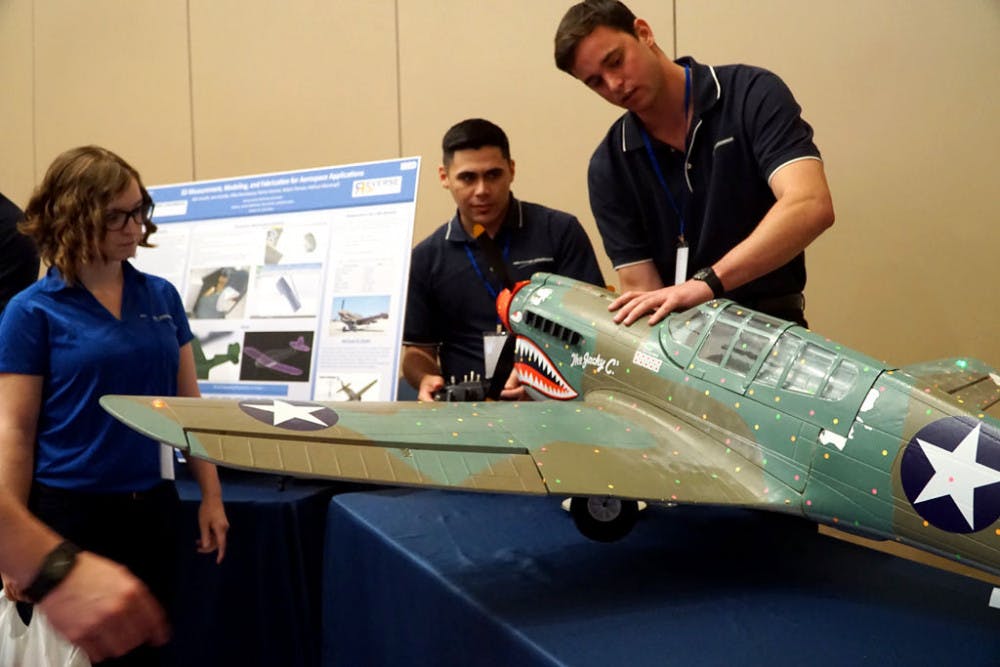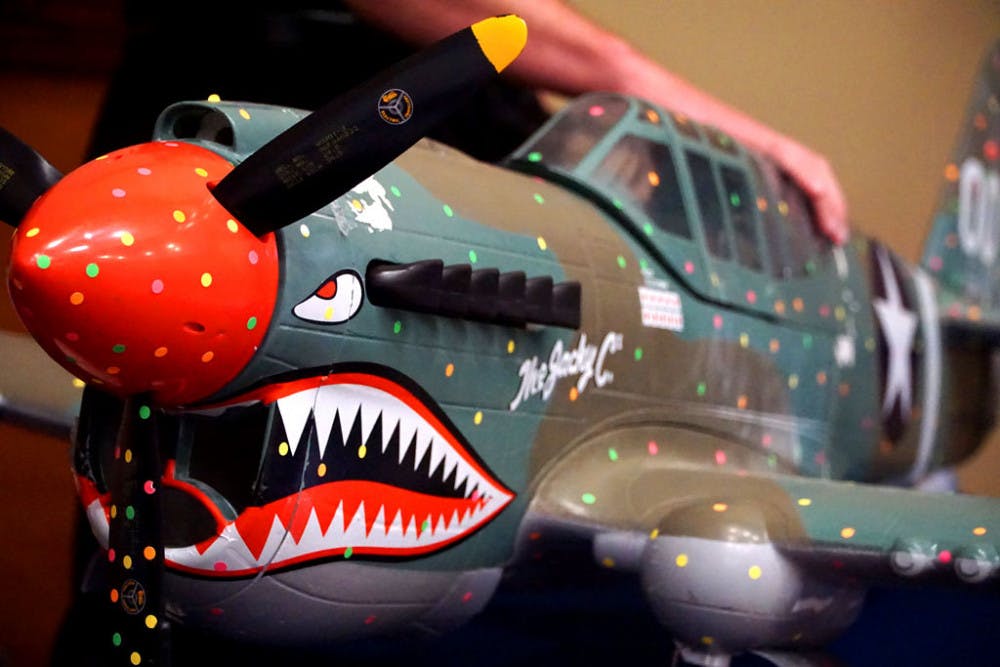A model plane built by UF students never got off the ground.
About 20 student teams presented engineering projects at the Integrated Product and Process Design Final Design Review on Tuesday, where students showcased the products they built for their sponsors at the Reitz Union Grand Ballroom.
The Reverse Air Team, which attempted to reverse-engineer a model plane and fly it, could not complete its initial project due to UF regulations on drones and aircraft set place in January.
In order to fly a drone on campus, users must get certification by the Federal Aviation Administration and be approved by UF’s Environmental Health and Safety Office, according to Alligator archives.

Members of the UF Reverse Air Team show off their model plane at the Integrated Product and Process Design Final Design Review on Tuesday.
Students must also provide proof of insurance and contact the FFA themselves to get certification.
When the six-member team received the email, the members were halfway through their research, which they started Fall 2015. The plane fell under UF’s drone regulations.
The team was reverse-engineering a replica of a World War II warhawk attack plane. For this, students took a non-functional model apart piece by piece and tried to improve its flight abilities, said Sam Gamble, a member of the team.
The team’s faculty advisor, Carl Crane, said UF’s sudden regulation prevented the model from being tested. He said the team couldn’t fly it in the football team’s indoor practice facility, the only space with enough room to test it.
“They grounded us,” said Crane, a professor in the Department of Mechanical and Aerospace Engineering. “We just weren’t able to fly the model.”
Gamble, a UF aerospace and mechanical engineering senior, said there wasn’t enough time to get the plane approved and tested before the end of the semester. Because the team was modifying the model, they couldn’t guarantee it was safe to fly, a needed qualification by the FAA.
“It’s more paperwork on more paperwork,” the 21-year-old said.
Instead of testing the 3-foot-tall plane’s flight abilities, the team made a manual explaining theories behind reverse-engineering the plane, she said. UF funded the research project, but in order to test it, the students would have had to spend $600 on a new plane to be approved.
“If we had paid for it ourselves, we would have been able to fly it,” she said.
On Tuesday, Gamble and the rest of the team presented the model plane and theories to their company sponsor, Northrop Grumman, a global security company, without real flight data.
“It’s what it is now,” said Gamble. “I just hope UF, I guess, will provide more aid in filling out the application.”
@k_newberg
knewberg@alligator.org
The model World War II warhawk attack plane built by the UF Reverse Air Team cannot be flown due to UF’s regulations on drones and aircrafts set place in January.






